Buy Child of Light
As old genres are becoming new again thanks to the efforts of indie developers, fans of once-dominant game types can hope their favorite ones will make a comeback. This includes the Japanese-style turn-based RPG, a genre that is still alive but in a very limited way on home consoles and PC. Most of the console lineup consists of niche efforts from NIS, and Atlus and Namco Bandai also throw in a few from their respective popular Persona and Tales of series. For the PC, the bulk of the JRPG lineup consists of games created with the RPG Maker program and a few translated efforts from Japan. Child of Light is interesting because it's a JRPG that wasn't developed in Japan but by the very Western Ubisoft Montreal — and with great results.
The visuals are one of the more immediate things to note about Child of Light because they are so arresting. The watercolor style isn't new, but the game handles it brilliantly. If any title embodies the idea of a living painting, this is it. Levels look vibrant and artistic, and the sense of depth makes it look just as stunning as the recent Rayman games, a feat that should be expected since this title uses that same engine. The characters also exhibit beauty in their design and mannerisms. Attack and knockback animations are very detailed, and elements like flowing, long hair are simply hypnotizing.
The near-dreamlike look of the game conveys the idea that Child of Light is a lighthearted adventure. In truth, the story conveys emotions that are contrary to initial expectations. The year is 1895, and an Austrian duke has been blessed with the birth of his daughter Aurora and cursed with the fact that his wife died during childbirth. While he cares for his daughter, he's lonely and soon remarries. One night, Aurora falls asleep but succumbs to an illness that leaves her for dead. As her father grieves, her spirit wakes up in Lemuria, a land in another plane of existence. While the new realm is dreamlike in nature, it becomes clear that it is suffering under the rule of a dark queen who's terrorizing the land. With the help of a motley crew of newfound companions, Aurora sets forth to bring back the sun, the moon, and the stars to return peace to the land and get home before her father falls into depression.
This is a fairy tale kind of story. Anyone who has watched movies with a similar premise will recognize tropes such as the evil stepmother, companions with their own agendas, and the plight of becoming a reluctant hero to achieve a goal. Instead of following the exact blueprint, the tale aims for a more modern telling of fantasy stories. In particular, it dwells on darker situations longer than expected. It isn't at the level of Brothers: A Tale of Two Sons, but you'll see moments of weakness in Aurora when she thinks about her father, and the few scenes show his deterioration in the real world further solidify that emotion. A few of the environments are foreboding and provide a sharp contrast to the elegance of some of the towns.
Still, Child of Light makes some strides in ensuring it isn't a completely gloomy fantasy with cheery visuals all of the time. The whole thing is told in rhyme, and while that may turn off some people, it gives the game a playful tone. The other characters have some personality quirks, like the rodent whose culture is based solely on finance and the firefly that is naive about the world. It's the type of story that tries to balance light and serious moments, and it does quite well by the end.
These contrasts are amplified by the soundtrack, which does a good job of manipulating the tone at just the right times. The tone of the soundtrack provides an otherworldly feeling that is heavy on strings. The tones shift appropriately when moving from bleak forest to bustling town to dark caverns, but the shifts are gradual instead of sudden, and it helps the transitions feel smooth. Combat music is rousing, as are the victory melodies but, again, the transitions between these and the exploration music aren't jarring and keep the player in the right mood. This is a soundtrack that must be heard, as words can't do it much justice.
The game may be an RPG by definition, but it has some platforming elements when you're exploring the world. Multilayered lands and light puzzle elements are some of the things you'll encounter. Most puzzles involve pushing blocks in the appropriate places for elevation or activating switches, but you'll encounter a few that require your firefly friend Igniculus to light up dark areas, activate switches, or produce shadows that unlock doorways. When you gain the ability to fly, the basic tenets of platforming are gone, but you have a vast amount of space to explore to find hidden objects. As for enemies, random encounters are replaced with visible enemies. Like the few games that use them, visible enemies mean the ability to get in a surprise attack when combat starts. You can also go around most foes or have Igniculus blind them with light.
Combat is handled with an active time system that is similar in spirit to Final Fantasy VII. When combat begins, you have a time bar that is split into two areas. The larger blue area indicates waiting time before a move can be called, and the smaller red area indicates the time you must wait before the action is active. Your party, which always consists of two active members, has icons at the top of the bar while enemies have theirs on the bottom, and only your icons can stop time. The standard assortment of attacks, items and spells can be chosen depending on whose turn it is, and each action lets you know if it'll move faster or slower on the red timer portion before it's active. You can also change party members at this time with no penalty, so you can switch to someone stronger or more appropriate for the situation and use their ability immediately. The combat mechanics are straightforward, but the wrinkle is that if any character is hit while he or she is in the red timer zone, the action is interrupted and they're sent back to the blue zone, preventing them from carrying out their move. Thus, your strategy can be to knock enemies into the red zone with quick attacks and, if you time everything just right, prevent them from unleashing an attack.
Despite taking inspiration from Japanese RPGs, the game does a number of things that make it simpler and more accessible to a wider audience. Even though battles are limited to two party members on the field at a time and each member has a specific purpose (defense, healing, multiple enemy attack, etc.), everyone in the party earns XP at the same rate, so you're never stuck with an extremely weak member. There is a skill tree for each character, and placing improvements there does improve each character, but it isn't entirely customizable. There are three branches to the tree, but the unlocks are pretty linear. The idea of gaining new equipment is also gone, so shops and currency is no longer needed. You can still improve what you have with the jewel crafting system, which is rather involved but can yield things like new elemental attacks, increased speed, and an accelerated XP rate. It might not be as deep as something found in Diablo III, but you will spend a good deal of time finding the right combinations to create newer and stronger jewels with more lasting effects.
Perhaps the most surprising of these elements is Igniculus, who becomes an invaluable part of the game even though he doesn't directly fight. Just like he does in explorations sections, he can blind enemies during combat, causing those enemies to move slowly along the timer bar. He can also touch glowing plants in a battle stage to collect mana and health for your party. He has the ability to heal allies by glowing over them, and this ability isn't frozen when it's time for your party to choose which ability to use. Best of all, Igniculus can be controlled by a second player, giving the game a bit of a co-op feel while making it feel significant at the same time.
Igniculus' abilities highlight one of the few complaints with Child of Light, namely that it doesn't feel very challenging. The ability to heal is everywhere, since there are several plants in each fight and environment, allowing you to easily replenish your health and mana. Igniculus' meter slowly replenishes during combat, and the plants are refreshed as well. It would mean that the fights would be much longer than what's normally tolerable, but if you can stand it, you'll never encounter a death in the game. The enemies, while not necessarily pushovers, are only tough during boss encounters, but throughout the whole game, death only occurred a handful of times. Genre veterans really benefit from starting the game at the higher difficulty level, but for those just starting out with RPGs, the default level serves as an introduction to see if you'll like the genre. The lack of character depth and growth will irk some die-hard fans of the genre. Aside from the main character, you don't see much change happening with the other party members. Their attitudes remain the same from beginning to end, and even though the characters are likeable, some type of evolution would've been nice.
This year has already seen a number of great games, and Child of Light can be counted as one of those titles. The look is unique, the story is intriguing, and the cast of characters livens up the routine fairy tale. The contrasts in mood are played up excellently by the soundtrack, and though characterization isn't deep, the overall tale is gripping enough. The gameplay, while simple, is very satisfying thanks to the dismissal of overly complicated mechanics, and the length feels just right. It can be considered easier than most of its peers in the genre, but it is a satisfying experience from beginning to end, and it's a title that no fan should miss. If you have even a small interest in role-playing games, Child of Light comes highly recommended.
Score: 9.0/10
More articles about Child of Light



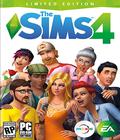
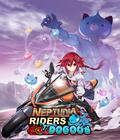

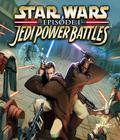
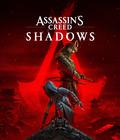
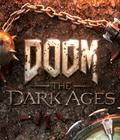
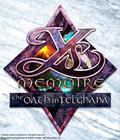
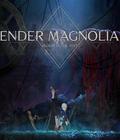

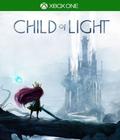 Child of Light is a reimagining of classic fairytales, inviting players on an epic adventure into the magical painted world of Lemuria.
Child of Light is a reimagining of classic fairytales, inviting players on an epic adventure into the magical painted world of Lemuria.




























